Abstract
A generally accepted format for the numerical description of the carcinogenic potency of a particular chemical in a particular strain of animals is desirable so that statements from different sources about potency and attempts by different authors to correlate potency with particular laboratory measurements will be comparable. The choice of an appropriate standard format is to a certain extent arbitrary. In this paper we recommend that the TD50 (tumorigenic dose rate 50) be used. TD50 can be calculated for a single target site or combination of sites. The TD50, in analogy with the LD50, is defined as that chronic dose rate (in mg/kg body weight/day) which would halve the actuarially adjusted percentage of tumor-free animals at the end of a standard experiment time--the "standard lifespan" for the species. This paper consists of a brief discussion of the TD50, sufficient to make the general reader familiar with the properties of such an index, an appendix discussing methods for its estimation and certain conventions we have adopted for use in analyzing "nonstandard" experiments. A major problem in calculating any index of carcinogenic potency is that much published material gives only the final crude percentage of tumor-bearing animals at each dose, instead of percentages adjusted for the effects of intercurrent mortality or data from which these adjusted percentages can be derived. If the dose level administered to the animals is toxic, then premature death from nonneoplastic causes may prevent some dosed animals that would have developed tumors from actually doing so. This will particularly affect the high-dose group.(ABSTRACT TRUNCATED AT 250 WORDS)
Full text
PDF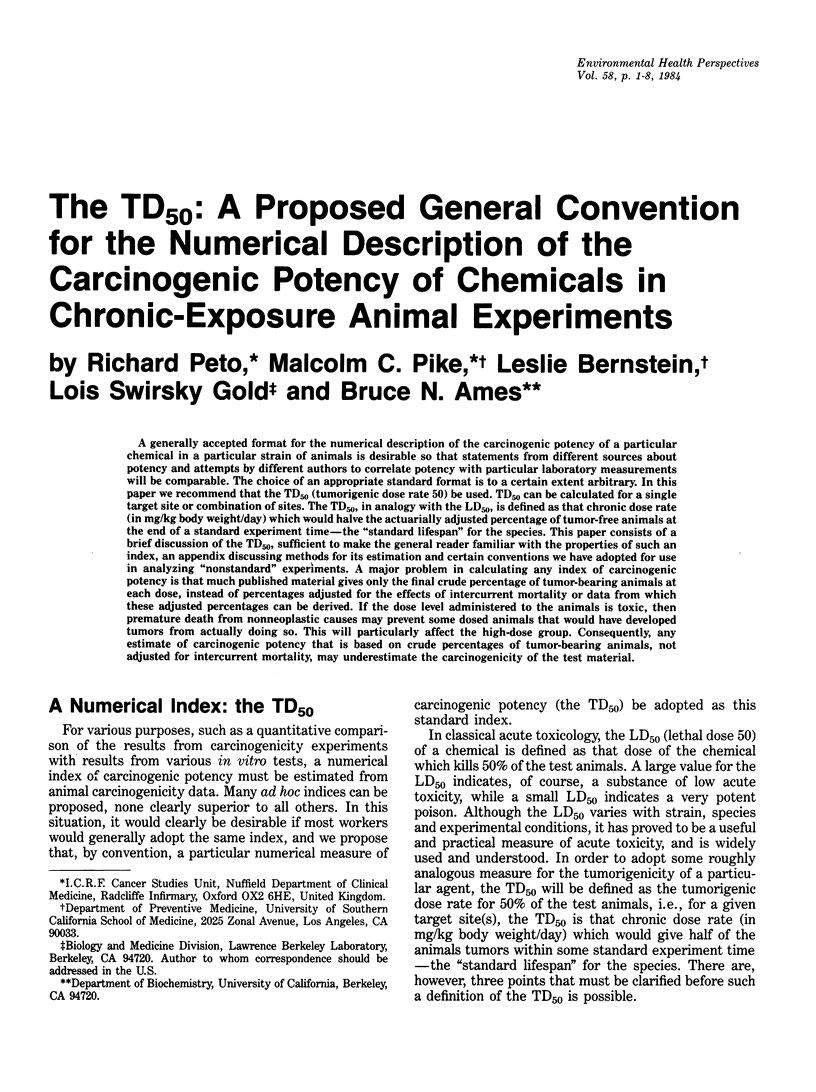

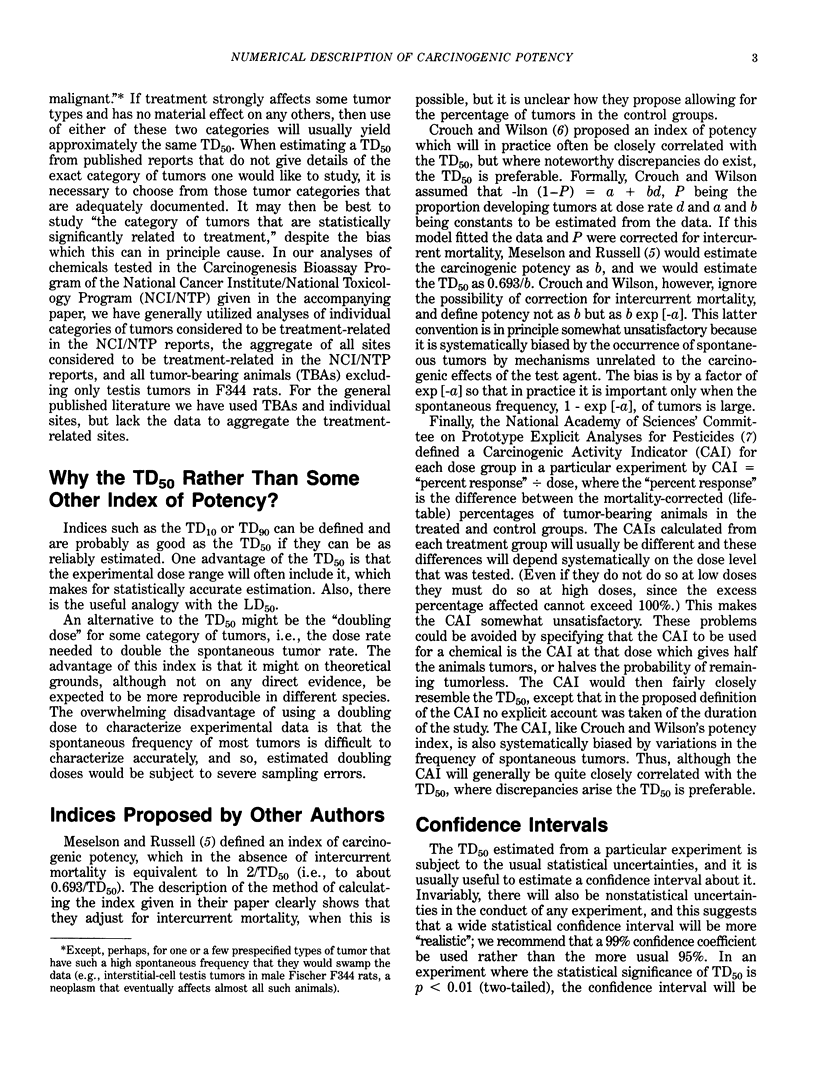
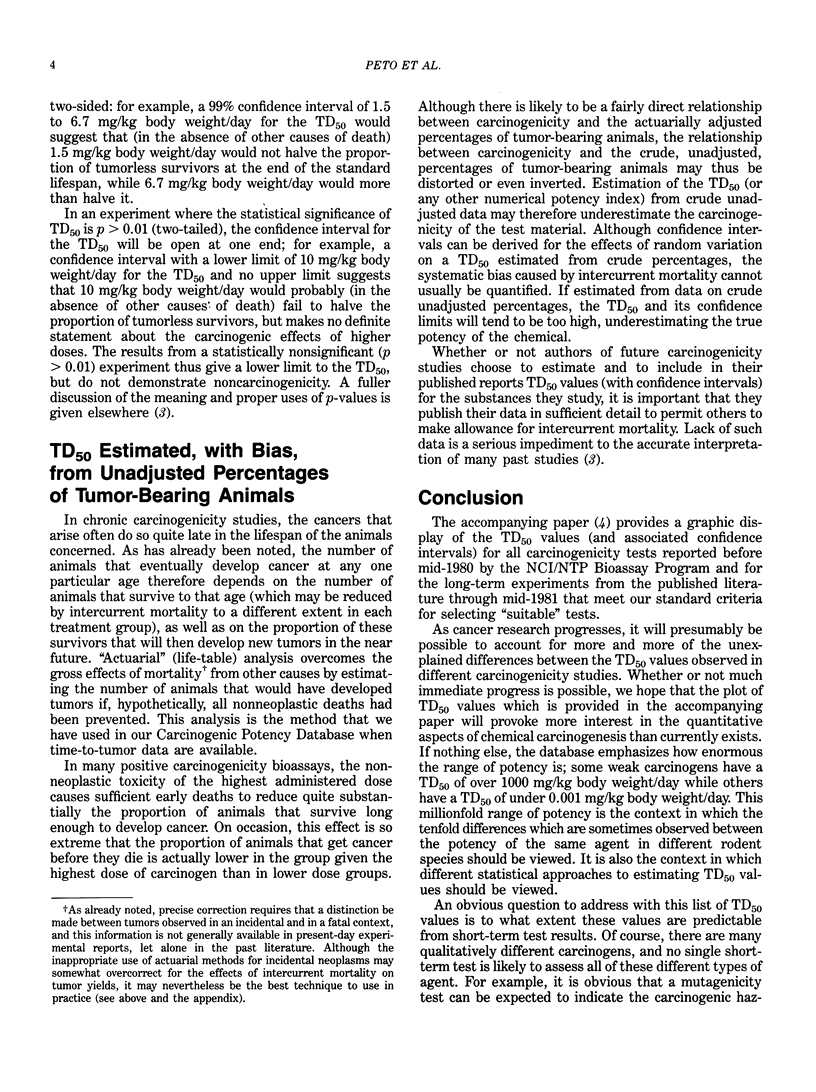
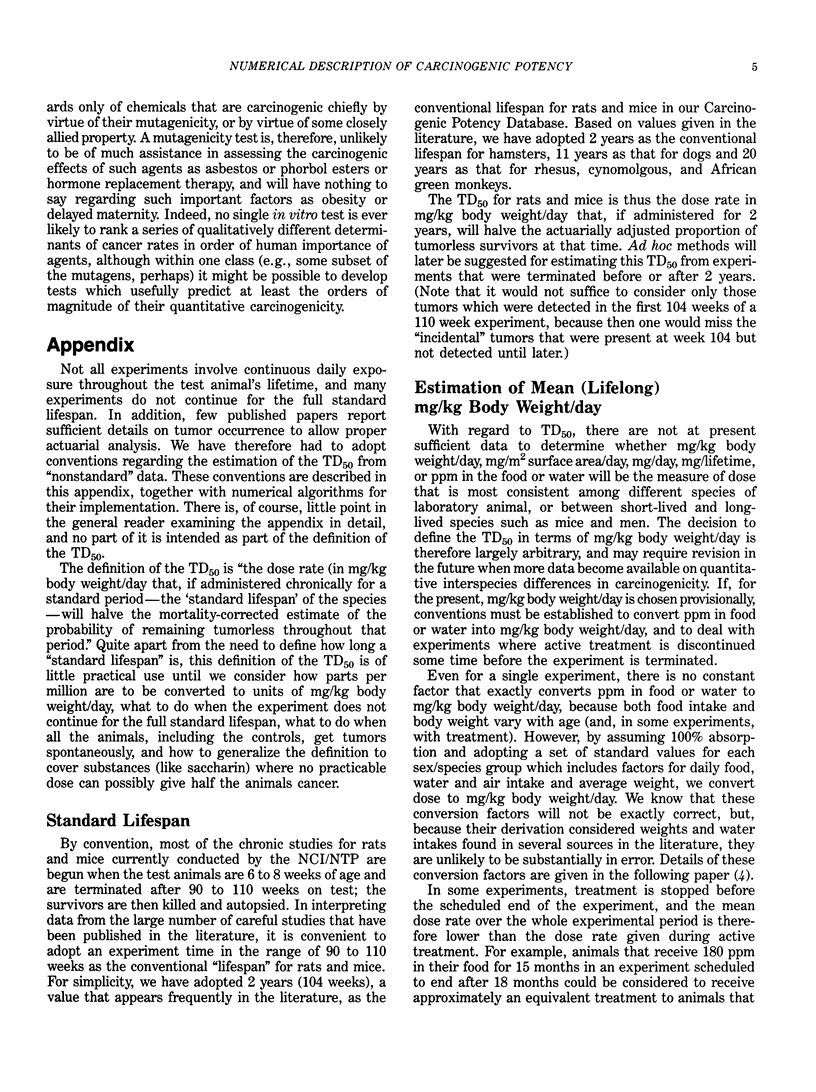


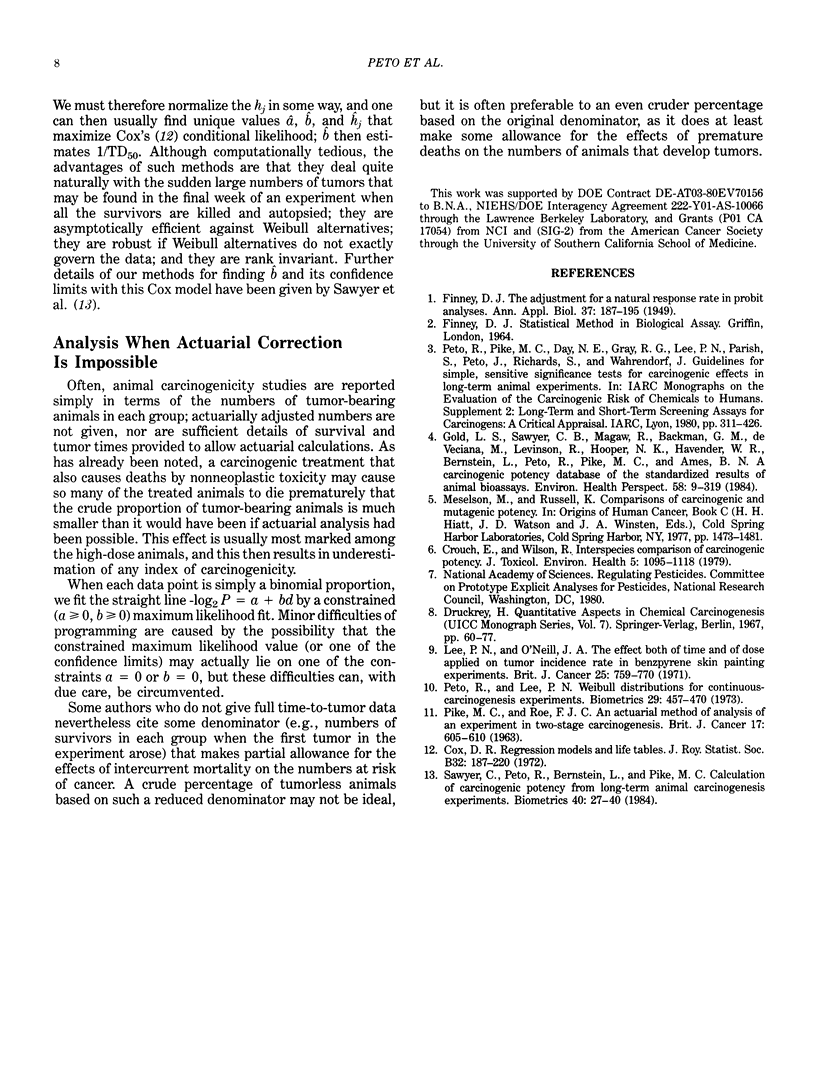
Selected References
These references are in PubMed. This may not be the complete list of references from this article.
- Crouch E., Wilson R. Interspecies comparison of carcionogenic potency. J Toxicol Environ Health. 1979 Nov;5(6):1095–1118. doi: 10.1080/15287397909529817. [DOI] [PubMed] [Google Scholar]
- Gold L. S., Sawyer C. B., Magaw R., Backman G. M., de Veciana M., Levinson R., Hooper N. K., Havender W. R., Bernstein L., Peto R. A carcinogenic potency database of the standardized results of animal bioassays. Environ Health Perspect. 1984 Dec;58:9–319. doi: 10.1289/ehp.84589. [DOI] [PMC free article] [PubMed] [Google Scholar]
- Lee P. N., O'Neill J. A. The effect both of time and dose applied on tumour incidence rate in benzopyrene skin painting experiments. Br J Cancer. 1971 Dec;25(4):759–770. doi: 10.1038/bjc.1971.90. [DOI] [PMC free article] [PubMed] [Google Scholar]
- PIKE M. C., ROE F. J. AN ACTUARIAL METHOD OF ANALYSIS OF AN EXPERIMENT IN TWO-STAGE CARCINOGENESIS. Br J Cancer. 1963 Dec;17:605–610. doi: 10.1038/bjc.1963.80. [DOI] [PMC free article] [PubMed] [Google Scholar]
- Peto R., Lee P. Weibull distributions for continuous-carcinogenesis experiments. Biometrics. 1973 Sep;29(3):457–470. [PubMed] [Google Scholar]
- Peto R., Pike M. C., Day N. E., Gray R. G., Lee P. N., Parish S., Peto J., Richards S., Wahrendorf J. Guidelines for simple, sensitive significance tests for carcinogenic effects in long-term animal experiments. IARC Monogr Eval Carcinog Risk Chem Hum Suppl. 1980;(2 Suppl):311–426. [PubMed] [Google Scholar]


